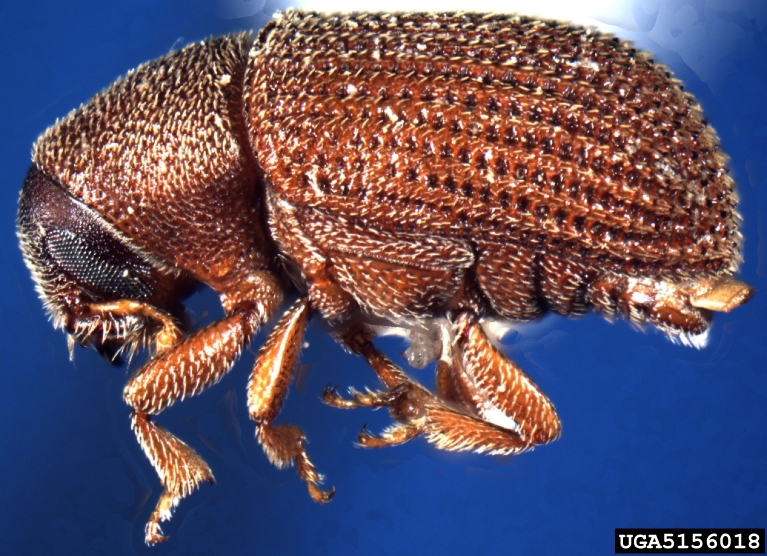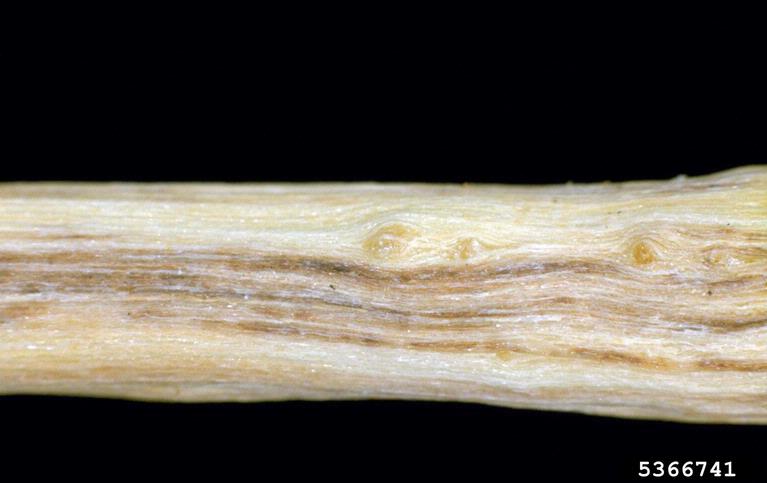FORESTRY
IN SOUTH DAKOTA
Dutch Elm Disease
The initial introduction of Dutch elm disease into the United States occurred in Cleveland, Ohio in 1931 when a contaminated shipment of lumber was delivered from France. It is a disease caused by the fungi Ophiostoma novo-ulmi and it only attacks trees in the elm family, Ulmaceae. It was first detected in South Dakota in 1967 and took nearly 20 years before it was found throughout the state in every county. All of South Dakota’s native elms are susceptible to this disease. This disease is vectored by native and non-native elm bark beetles carrying the fungus spores from elm to elm as well as root grafts that infect nearby trees. Root graphed infections will cause the trees to wilt quickly and result in mortality faster than infection by bark beetles.
Signs of this disease are defoliation, the leaf color changes to a wilt brown, and fungus growing underneath the bark that creates brown streaks in the cambium.
Thiabenadazole and propiconazole as root flare injections can be used as a preventative measure during the summer. However, this will only protect trees from beetle vectored infection, not those spread via root graft. Infected trees should be removed immediately and a trench should be cut between the infected trees and healthy elms within 40 to 50 feet.

Native Elm Beetle, J.R. Baker & S.B. Bambara, North Carolina State University, Bugwood.org

Infected Tree, Brian Olson, Oklahoma State University, Bugwood.org

Bark Streak, William Jacobi, Colorado State University, Bugwood.org